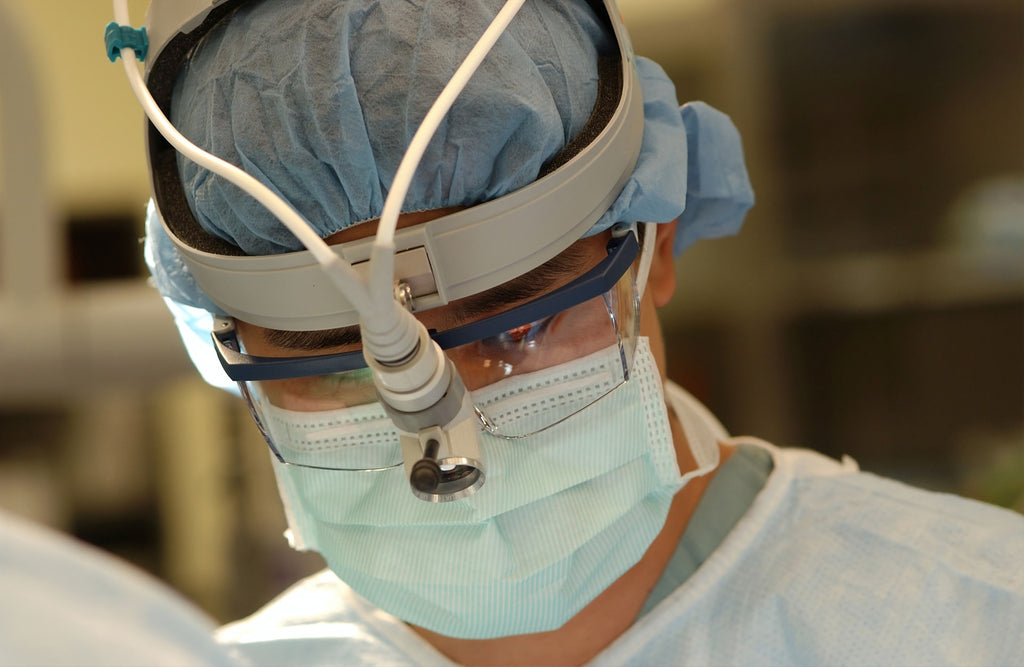Uterine Fibroid Embolization: Everything You Should Know
Uterine fibroid embolization is a minimally-invasive procedure used to treat uterine fibroids–an issue experienced by millions of women across the world each year.

There are many treatment options for uterine fibroids, so it's not surprising that when presented with choices, some can find the decision overwhelming.
A popular treatment option for them is uterine fibroid embolization.
Fibroids are tumors that are most frequently seen in the female reproductive system. Most of the time these tumors are benign, which means they are non-cancerous.
It is estimated that uterine fibroids affect millions of women across the world and accounts for 60% of the 600,000 hysterectomies performed in the United States each year.
Even though many uterine fibroids are benign, they can often range in size from the size of a pea to a softball or even a small grapefruit, which can cause varying levels of discomfort. These fibroids can cause many unwanted symptoms in females, such as heavy periods, pelvic pressure, bloating, urinary frequency, and even constipation.
There are many treatments available for uterine fibroids which include hysterectomies and also uterine fibroid embolization (UFE).
What is uterine fibroid embolization (UFE)?
Uterine fibroid embolization is a minimally-invasive procedure that is performed through a small artery in the wrist to treat uterine fibroids and in some cases, adenomyosis.
This surgery is safer and easier than any other traditional alternative surgery. It preserves fertility, has a shorter recovery time, and has fewer complications.
In fact, most patients are able to receive outpatient treatment and return home on the same day!
Uterine fibroid embolization involves a small catheter being inserted into the artery. Using x-rays, the doctor or surgeon delivers tiny beads within the arteries that bring blood to the uterus.
This slows down the blood flow which causes the fibroids to shrink over a period of weeks!
This procedure is usually performed using general anesthesia and is minimally-invasive.
What are embolization procedures, generally speaking?
Embolization procedures are usually performed by an interventional radiologist who will insert a thin catheter into an artery, either at the groin or wrist.
The incision is tiny and is usually only the size of the tip of a pencil!
The radiologist will then guide the catheter to the fibroid's blood supply where they will then release small particles which float downstream and clear the blood vessels of nutrients that are consumed by the fibroids.
This is what normally ameliorates the symptoms caused by the fibroids, and even causes them to shrink, soften and bleed less!
Before every surgery, you will usually have a consultation with your doctor. They will let you know if you need to receive any diagnostic tests, go through different sedation options with you, and is also the perfect time for you to tell them about any allergies or sensitivities that could affect your treatment.
Success rate of uterine fibroid embolization (UFE)
The success rate of uterine fibroid embolization normally reports successfully in approximately 9 out of 10 patients who undergo the procedure.
Aside from treating the uterine fibroids, the procedure also has other benefits.
It can be performed in a single day, is minimally-invasive, preserves fertility and it may even improve sexual health.
In some cases, it also decreases bleeding during the menstrual cycle.
What is the uterine fibroid embolization recovery process?
The recovery period for uterine fibroid embolization is shorter than many other alternatives out there. Most patients can go home on the same day of the procedure.
Reported side effects include cramps and pelvic pain, which are usually due to reduced blood flow to the uterus. This is usually treated with pain medication including opioids and anti-inflammatory medications.
In most cases, the fibroids begin shrinking within one to two weeks following the procedure and it is best practice for most patients to follow up with the doctor or surgeon to monitor the progress of their fibroid embolization.
How Fast Do Uterine Fibroids Shrink After Embolization?
This procedure is not instant, and it does take a few weeks /months for the fibroids to completely shrink.
In most cases, it usually takes two to three months for the patient to notice any relief in symptoms and a few months for the fibroids to continue to shrink and soften.
Can fibroids grow back after my UFE procedure?
Although it is possible in many cases that fibroids can grow back after the uterine fibroid embolization procedure, in almost all cases fibroids usually do not grow back.
It is highly likely that you will experience improved symptoms and quality of life.
It's important to remember that this procedure is designed to cause fibroids to shrink not completely disappear and the result of this treatment will vary largely on the quantity and condition of your fibroids, your general health, and other variables.
Is uterine fibroid embolization right for me?
Although most women can benefit from uterine fibroid embolization, there are some cases in which you may be ineligible for the procedure. Patients should discuss their eligibility for UFE with their physician.
If you have an active pelvic infection, endometrial cancer, large fibroids, or a strong desire to preserve your fertility, for example, you may want to seek alternative treatments.
Have more questions? You can contact our radiology offices by submitting a form here, or by giving us a call at (562) 906-5572.
Sources:
[i] https://www.ncbi.nlm.nih.gov/pmc/articles/PMC1949124/
[ii] https://www.ncbi.nlm.nih.gov/books/NBK279533/

